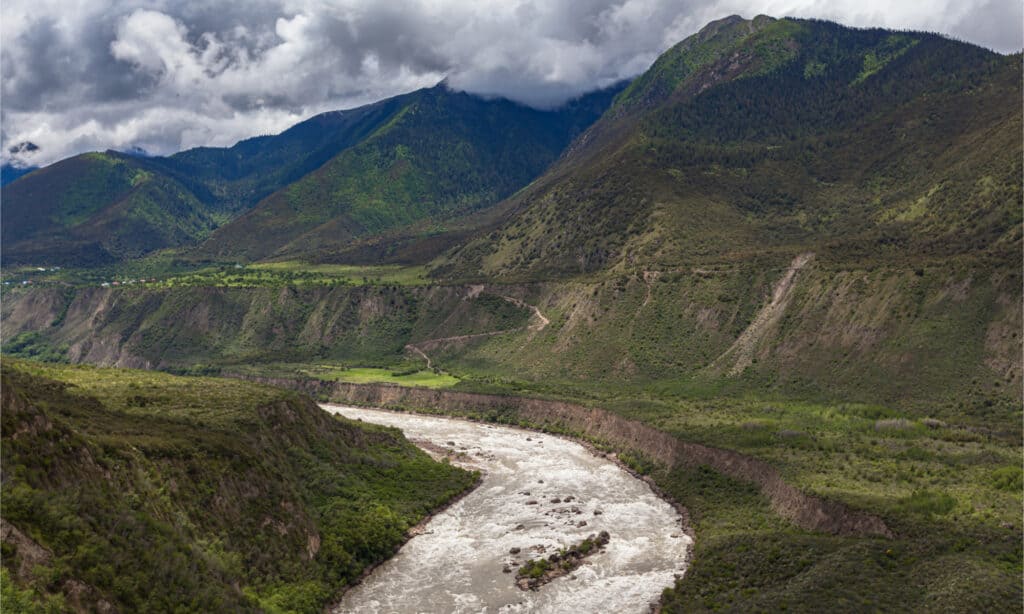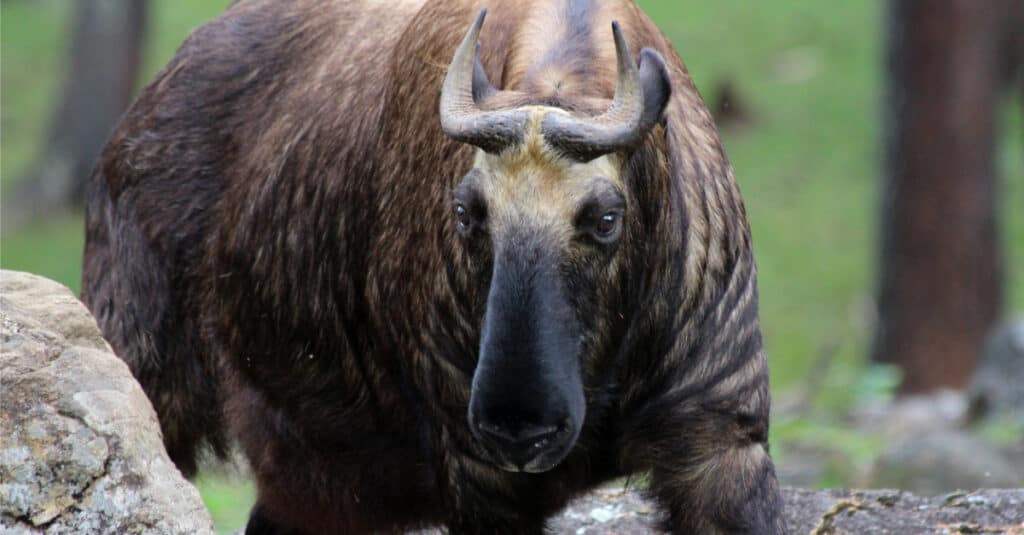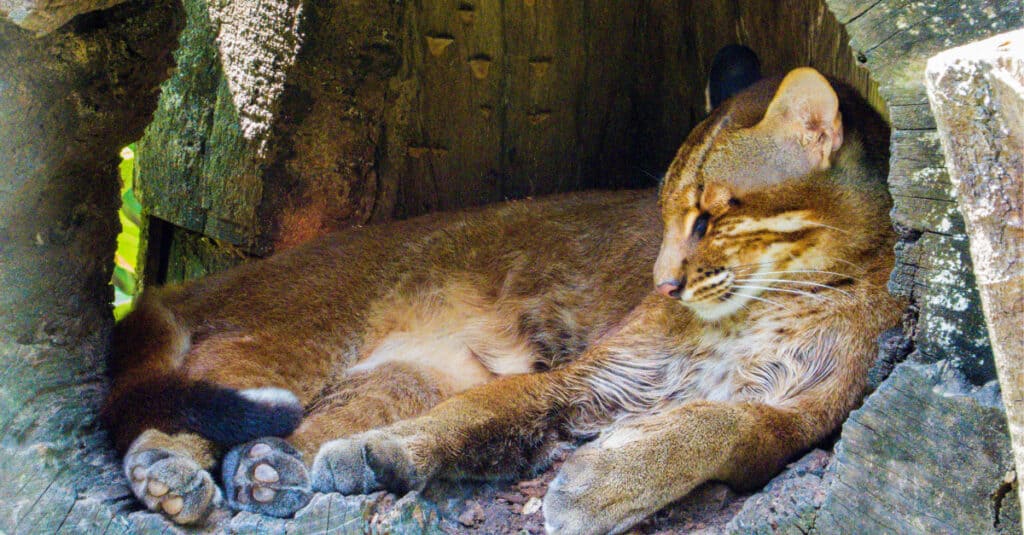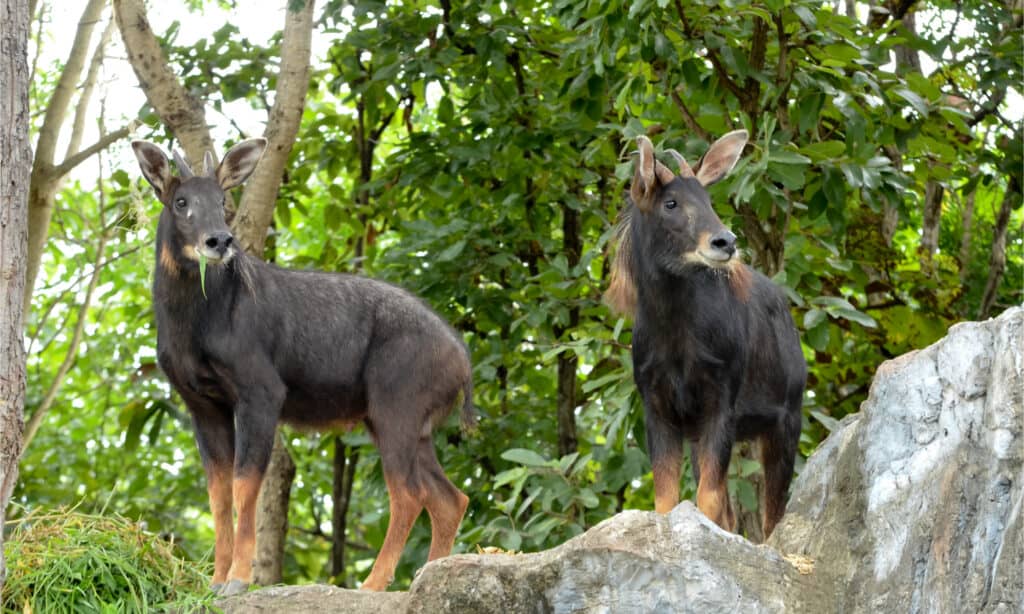A canyon is a deep gore that usually has a river flowing through it. Canyons are created by uplifts which allow rivers to step into the landscape. The United States has about 70 canyons, known for their surreal beauty.
Worldwide, there are over 250 canyons, each with unique history, wildlife, and marine life. Of all these canyons, we’ll take a look at the largest and deepest. Let’s discover the largest canyon in the world.
What is the Largest and Deepest Canyon in the World?

The “Yarlung Tsangpo Grand Canyon” is the largest and deepest canyon in the world.
©Peter Stein/Shutterstock.com
The “Yarlung Tsangpo Grand Canyon” is the largest and deepest canyon in the world. The canyon reaches an average depth of 7,440 feet passing through the Gyala Peri mountains and the peaks of the Namcha Barwa.
At Namcha Barwa, it reaches an average depth of 16,000 feet. The Yarlung Tsangpo Grand Canyon also known as the Yarlung Zangbo Grand canyon is located in Tibet, along the Yarlung Tsangpo River.
Wildlife in Yarlung Tsangpo Grand Canyon
There are claims that Yarlung Tsangpo Grand Canyon has as many as 232 species of birds, 63 species of mammals, 25 species of reptiles, 19 species of amphibians and more than 2,000 species of insects! According to China Daily, “Eight endangered wild animals under top State protection have been caught on camera in the Tibet autonomous region’s Yarlung Zangbo Grand Canyon.” Let’s take a look at the canyon’s rare animals.
Rare Animals in Yarlung Tsangpo Grand Canyon
Bhutan Takin (Budorcas taxicolor whitei)

The Bhutan Takin is a subspecies of Takin found in Bhutan, as well as a few other parts of China and India.
©iStock.com/Grant Thomas
The Bhutan Takin is a subspecies of Takin found in Bhutan, as well as a few other parts of China and India. It is so rarely seen that most people haven’t even heard of it. This large animal weighs 770 pounds and is known to feed on leaves, buds, and grass.
Bhutan Takins are mammals that are found in bamboo forests but only at altitudes of 3,300 feet to 15,000 feet. They live in herds of 15-20 but in the winter, multiple herds come together to make a larger herd. These larger herds have up to 100 Bhutan Takins and this helps them keep warm in the Yarlung Tsangpo Grand Canyon, however, Bhutan Takins aren’t often sighted.
Clouded Leopards (Neofelis nebulosa)

Clouded Leopards are bulky, powerful, and endangered wildcats.
©iStock.com/Jenhung Huang
Clouded leopards, which are also known as mainland clouded leopards, are wild cats found in the dense forests of the foothills of the Himalayas, right through Southeast Asia, and into South China. They have also been spotted in Yarlung Tsangpo Grand Canyon.
According to Reginald Innes Pocock, a British zoologist, clouded leopards have considerable bulk, powerful builds, and long canines which help their bites penetrate deeper.
Clouded leopards are fantastic hunters who often stalk their prey or lay patiently in wait for the perfect moment to strike. Clouded leopards are carnivores. They hunt monkeys, small deer, wild pigs, birds and rodents; also domestic calves, pigs, goats and poultry. The species is considered endangered in the United States.
Large Indian Civets (Viverra zibetha)

Large civets are small cat-like carnivorous mammals.
©Narupon Nimpaiboon/Shutterstock.com
Large civets are small cat-like mammals that have been spotted in Yarlung Tsangpo Grand Canyon. On average, their weight ranges from 7.5 to 20 pounds and about 20 to 37.4 inches in length. However, they are considered large as they are much bigger than small Indian civets. Large Indian civets are known for their large body that is gray or brown. There are black spots on their bodies and stripes of black and white on the sides of their necks, usually two white stripes with three black stripes. Their tail has several black rings around it. Male Large Indian civets are slightly bigger than the females and have retractable claws.
As carnivores, they feed on fish, lizards, birds, crabs, and many more small arthropods. Large Indian Civets live solitary lives and are more active at night. However, they are known to breed all year and often have litters twice yearly with up to four young in each litter. The mothers raise their young on their own.
Golden Cats (Catopuma temminckii)

Asian golden cats are an endangered species of wild cats known for their unique gold color.
©iStock.com/Diego Fiore
Asian golden cats- often referred to as golden cats- are another endangered species that have been spotted in Yarlung Tsangpo Grand Canyon. They are medium-sized wild cats threatened by poaching and habitat destruction.
On average, they weigh anywhere from 20 to 35 pounds and are about 26 to 41 inches long. Golden cats’ kittens are blind at birth and are covered with the same color fur as adult cats. They open their eyes 6 to 12 days after being born. Golden cats are known for their lovely golden colors, although other color variants have been discovered. Some specimens have buff-brown and reddish-brown colors.
Golden Jackals (Canis aureus)

Golden jackals are an endangered species of jackals with golden coloring.
©iStock.com/Evgeny Meerson
Yarlung Tsangpo Grand Canyon is also home to golden jackals, an endangered species of jackals. Jackals look a lot like wolves, despite being opportunistic scavengers. Golden jackals are the largest of the jackal species. They weigh about 15 to 33 pounds with a length of 17.5 to 19.7 inches.
Golden jackals are omnivorous and hunt small or injured deer. However, they only hunt in groups and never alone. Golden jackals are also known to eat reptiles, fruits, berries, and birds. They aren’t picky about what they eat and are known to eat almost any food they can find. Golden jackals can be tamed. Usually, tamed jackals, living in houses, have a behavior of a domesticated dog. However, they are still shy towards strangers, not allowing them to caress them.
Himalayan Serow (Capricornis sumatraensis thar)

©Anan Kaewkhammul/Shutterstock.com
Himalayan serows, which were formerly considered a species (Capricornis thar), are known now as subspecies of the mainland serow. They are heavy and endangered mammals that have been spotted in Yarlung Tsangpo Grand Canyon. They are considered to be a mix of a goat, an antelope and donkey due to their strange features.
Himalayan serows weigh about 404 pounds to 680 pounds and a length of about 55.11 inches to 70.8 inches.
They usually have black fur, rusty red upper legs, and whitish lower legs. Usually, they live in hilly forests with preferred elevations of 980 feet. However, they descend to 330 feet in the winter. They are known herbivores and eat a broad range of plants.
Himalayan Monals (Lophophorus impejanus)

Himalayan Monals are large pheasants usually found in upper temperate oak-conifer forests that feature wide grassy slopes.
©iStock.com/Michel VIARD
Himalayan monals are also known as Impeyan monals and Impeyan pheasants. They are large birds and often weigh up to 5 pounds. They prefer to live in upper temperate oak-conifer forests that feature wide grassy slopes. Himalayan monals are social birds that are mostly seen in pairs or small groups. They dig well and can obtain plant roots during snowy periods. Himalayan monals are known to feed on insects, berries, seeds, tuber and roots.
Despite their endangered status in many countries, Himalayan monals are commonly found in several other places across the world. Though the exact number of Himalayan monals spotted in the Yarlung Tsangpo Grand Canyon is unknown, they are easily found in countries like Pakistan.
Red Gorals (Naemorhedus baileyi)
Red gorals are hoofed herbivorous mammals. They are commonly found 1000 – 2000 meters above sea level. Red gorals are active during the day and retreat back to the cliffs at night to sleep. They move around vertically depending on what season it is – in summertime they move to the upper parts of the forest and during winter they move to low areas of the forest.
Red gorals have bright foxy-red fur that is long, soft, and shaggy. They typically have a singular thin, dark stripe that runs along the back of their heads to their tail tips. Their legs are the same color as their bodies. However, their bellies and undersides are a bit lighter. They also have short tails compared to other gorals.
Red Gorals are threatened by hunting and habitat loss.
The photo featured at the top of this post is © VogelSP/Shutterstock.com
Thank you for reading! Have some feedback for us? Contact the AZ Animals editorial team.






